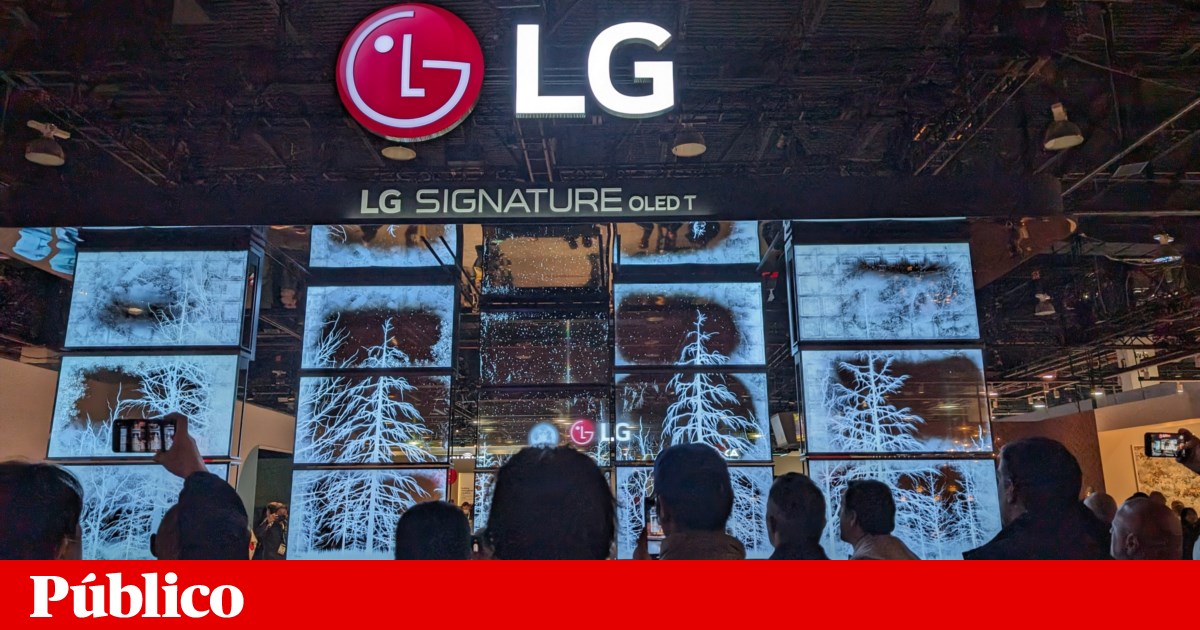The new Transparent TV from the South Korean company LG was perhaps one of the most photographed devices at the 2024 edition of the Consumer Electronics Show (CES), the global technology festival that dominates Las Vegas at the beginning of the year. No matter the day or time, it was impossible to enter the central pavilion of the Las Vegas Convention Center (LVCC) without seeing small crowds trying to catch a glimpse of the OLED T, LG's new TV.
Although the festival is known for introducing new types of screens, the focus for years has been on flexible screens – which can be folded, unfolded, contracted or expanded. The era of transparent screens has now arrived, with proposals from LG and Samsung. However, when viewed in person, “transparent” would be a better description, a fact that doesn't make it any less impressive.
The concept behind the OLED T (transparent, of course) is to allow a large TV to be more easily integrated into a room, eliminating the dilemma of a “black box” in the middle of the room. When not in use, the LG Wireless Frameless Display can be used to create the illusion of a futuristic aquarium, with fish floating in the air, or a fireplace flame crackling on a bookshelf. It can be placed in front of a window without blocking the outside view.
While working, there is a black contrast screen behind the transparent screen, which opens to improve viewing quality. It's optional: Watching concerts with the screen open creates the idea of a private concert in the middle of the room.
doctor
LG wasn't the only company bringing transparent displays to CES. Its compatriot Samsung also introduced a transparent screen. Instead of home TVs, the brand sees its transparent screens (a concept at the moment) being inserted into the windows of private locker rooms for sports games. Because they are transparent, they allow viewers to watch the games with access to additional information and game details in high definition.
To illustrate the point, Samsung chose to mount its transparent screens in front of regular TVs showing football matches, a choice that ended up being less impressive to CES visitors.
Microlead Reverse OLED
The new displays from Samsung and LG differ not only in purpose. LG wants to sell an OLED (organic light-emitting diode) display that suggests there are carbon-based organic compounds capable of emitting light. Displays created using OLED technology are more flexible and thinner, facilitating innovative (e.g., foldable) designs. However, the presence of organic materials limits the useful life of these devices, as the organic components deteriorate and produce less bright images.
Samsung is betting on a microLED screen. As the name suggests, these lamps rely on millions of tiny microscopic light sources and do not include organic components, making them more durable. The disadvantage is the cost associated with the complexity of production. A pixel on a MicroLED screen is made up of three microscopic LEDs, which means a 4K TV would require millions of these tiny objects.
doctor
At this point, both South Korean proposals are considered prototypes. LG hopes to put the finishing touches on its product in the coming months. One topic under discussion is whether the new TV should be sold on its own or as part of a custom rack. As for the technical details: The company says that the wireless screen comes with 4K resolution and is 77 inches in size.
The TV also promises new artificial intelligence (AI) capabilities, thanks to LG's new Alpha 11 processor. “Alpha 11 allows LG OLED TVs to learn about the user, understand their needs and deliver more personalized experiences,” LG Vice President of Content and Services Matthew Durgin emphasized in the TV’s presentation. However, the promise has received less attention than the screen's transparency.
The technology is not new
Amid the hustle and bustle surrounding transparent displays at CES, it's worth noting that neither Samsung nor LG were the first to explore the technology on TVs. In 2020, for example, the Chinese company Xiaomi celebrated its tenth anniversary by introducing the Mi TV Lux. Like LG's proposal, it's a transparent, though smaller (55-inch) OLED TV with wires. It is only available in China.
Data from analyst Mordor Intelligence indicates that transparent displays are part of a growing market expected to reach $15.9 billion (€14.4 billion) in the next five years – for comparison, the smart TV market is estimated at $275.69 billion ($251 billion euros). To date, use cases for transparent displays have mainly included glasses and smart displays for advertising purposes.
LG hopes to bring the OLED T to the market from the end of 2024, starting in South Korea.
PÚBLICO traveled at the invitation of the Consumer Technology Association, responsible for CES

“Coffee trailblazer. Social media ninja. Unapologetic web guru. Friendly music fan. Alcohol fanatic.”

